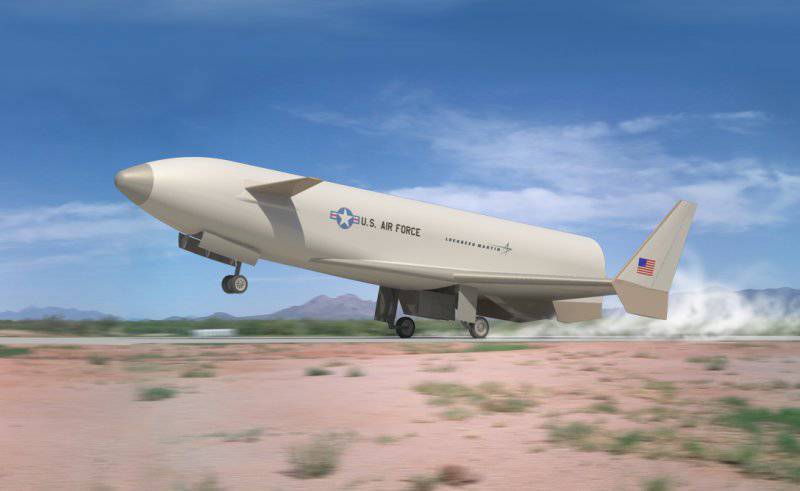Lockheed Develops Reusable Launch Systems
The Air Force Research Laboratory, in conjunction with the Center for Air Force Space and Rocket Systems, is developing the SRMI program as a new generation of launch vehicles that will significantly improve the feasibility, performance and reusability of future orbital delivery vehicles compared to modern disposable launchers.
SRMI consists of autonomous, multiple use of the first stage, equipped with a rocket engine, complete with a disposable last stage. The reusable 1-th stage begins a vertical launch and delivers the one-time last stage to an intermediate point. From the intermediate point 1-I reusable level returns directly to the launch base, landing the aircraft on the runway.
Reusable launch vehicle launch system
The initial tasks for the flight program of the Reusable Launcher System and the ground-based experiments program will be to provide, within the SRMI program, the flights of a demonstration device called the SRMI Guidance Plane, which is scheduled to launch on 2015. The amount of funds for fulfilling the order for the 1 task is $ 2 million. In this case, the total value of the contract will be up to $ 250 million during the five-year contract period. The SRMI guidance aircraft will become an innovative reusable test aircraft equipped with a rocket engine. The guidance aircraft will demonstrate the capabilities of the “rocket return” maneuver performed by the Reusable Launch System and verify the accuracy of the requirements for the System, which will lead to improvements in the working design of the SRMI.
Creators and developers
The SRMI Lockheed Martin development team is led by Lockheed Martin Space Systems from Denver, Colorado, with Skunk Works Lockheed Martin, based in Palmdale, Calif. And Fort Worth from Texas. The team also includes small business partners involved in science and technology development: LLC from Moorpark, California, UP Aerospace, Highlands Ranch, Colorado and JFA Avionix Systems from Newbury Park, California.
Lockheed Martin also entered into an agreement with the leadership of the New Mexico Cosmodrome to conduct flight tests from the territory of the America Cosmodrome, located in southern New Mexico, to carry out the SRMI Plane Aiming Program.

Information